Echeverias are beautiful succulents known for their varied colors and tight, compact rosette leaves. But if you notice your echeveria growing tall and leggy instead of short, rounded, and compact, what could be wrong? We did the research to help you find some answers.
Your echeveria may grow tall due to a lack of sunlight. The stem and leaves will elongate and bend towards the direction where they can get more light.
If you want to know how to fix an elongated echeveria that's growing tall, then read on below. We'll give you a step-by-step guide on how to fix an elongated echeveria and where best to place them to prevent this from happening again.
Why Is My Echeveria Growing A Long Stem?
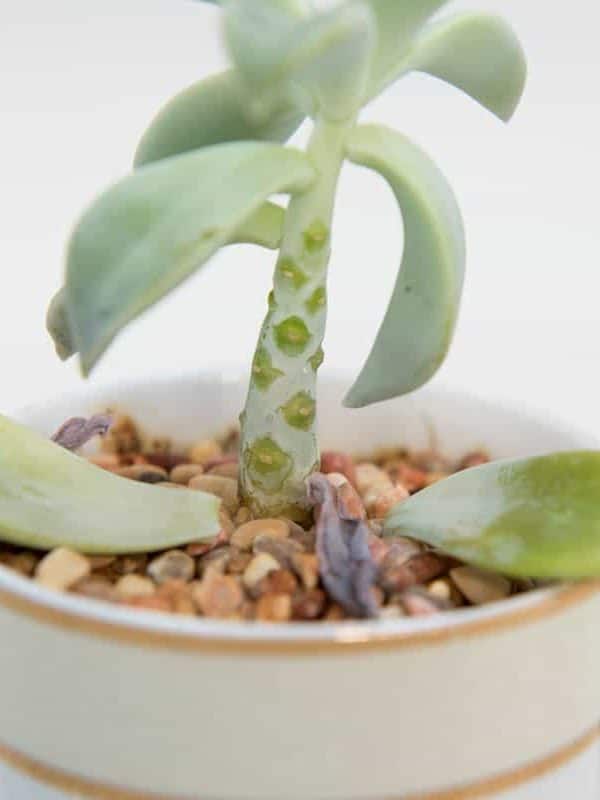
Echeverias are one of the most well-loved succulents because they are easy to grow, are low-maintenance, and have varied beautiful colors and leaf shapes. There are about 150 species of echeverias to choose from.
If you're growing succulents, you probably already know that they need a sufficient amount of sunlight to stay healthy. Echeverias especially love the sun and need 6 hours of sunlight daily to stay healthy and grow properly.
You can read this article if you want to know more about echeveria's sun requirements: Does Echeveria Need Full Sun?
If you notice your echeveria is growing tall instead of compact, this only means one thing: it is not getting enough sunlight.
You're probably scratching your head wondering why. After all, you may have already placed it beside a window, on the porch, or out in the garden. What could still be wrong?
Read on and we'll discuss where exactly you should place your echeverias so they will get sufficient sunlight.
Where Should I Put My Echeveria?
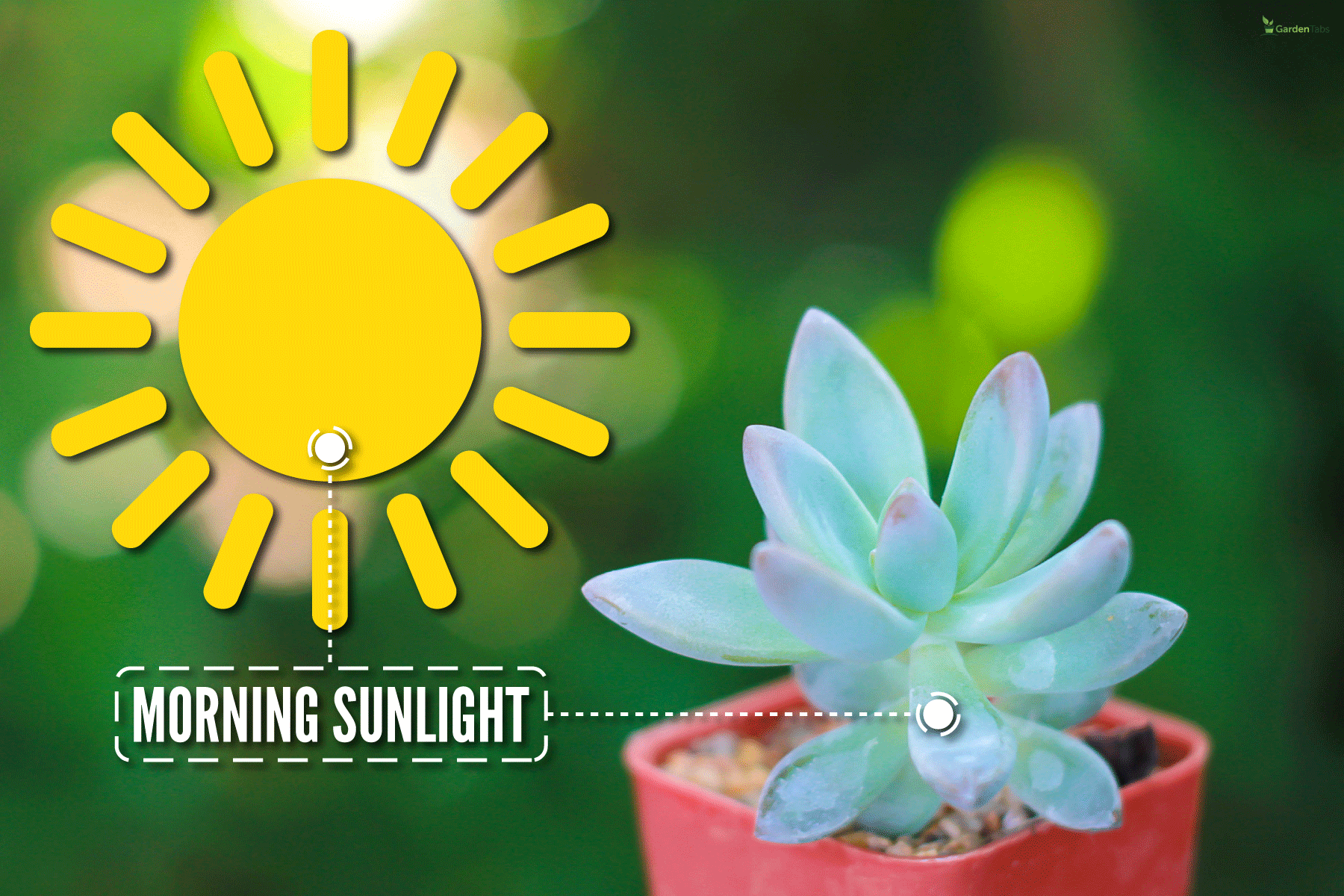
Echeverias are highly resilient, and with proper care, they can thrive year after year, even in extreme weather conditions. You can grow them successfully whether indoors or outdoors as long as you know where to place them so they'll get sufficient sunlight.
One thing you should note is that succulents absolutely love morning sunlight and it's the best kind of light that their leaves can tolerate directly.
If you're growing them in pots, you can easily transfer them to a spot where they can receive full morning sun and then bring them inside when the afternoon sun becomes scorching hot. Otherwise, their leaves can get burned.

Check out these succulent planter pots on Amazon.
If you're going to bring them inside after a good soaking of the morning sun, place them in an area where they can still get indirect sunlight such as beside a window or on the front porch. This way, you'll be able to give them the full six hours of daily sun that they need.
There will be times when the sun doesn't shine, especially during the rainy or winter season. During these instances, your succulents might suffer, but there's still a way to give them light. You can use LED grow lights to provide artificial light and continue to promote plant growth even indoors.

Check out this LED full spectrum grow lights on Amazon.
When growing your succulents indoors, the environment will be more humid. You may need to water them much less. As a rule of thumb, water only when the soil is completely dry.
If you're planting your echeverias directly on ground soil outdoors in your garden, make sure it's in a location that's getting enough morning sunlight and will be partly shaded come noontime when the sun is scorching.
When planting directly on ground soil, the most common problem will be root rot. To avoid this, make sure you're using at least 6 to 8 inches deep of well-draining soil that's specific for succulent growth.
You won't need to use fertilizers if they're planted in proper soil. They can be left alone without much maintenance.
Etiolation In Echeveria
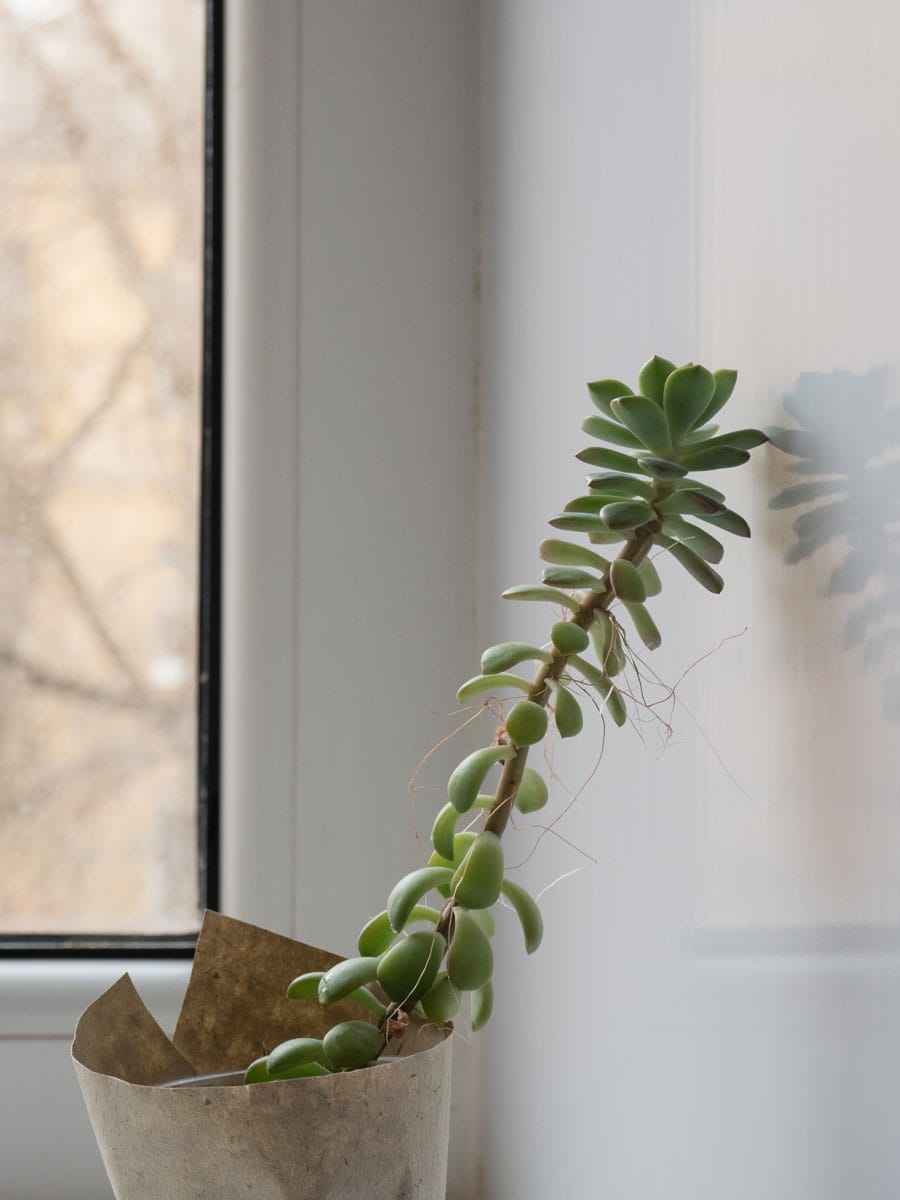
If your echeveria is growing upwards instead of round and compact, what is happening could be etiolation.
This is the term used to describe stretched plant growth caused by a lack of sunlight. They also describe the plant as being "leggy". This is a very common occurrence for succulents that are placed indoors or under the shade.
As they grow, the stems can stretch longer, the leaves grow in gaps, and the stem can turn and bend as it struggles to catch the direction of the light.
Echeverias with bright colors like red, yellow, and orange do not do well in the shade and are actually the fastest to elongate when they are sun-deprived. When they elongate, the colors often fade and turn green.
The other possible reasons why an echeveria elongates include over-fertilization, the plant pot being too big, or overcrowding the plants in a single pot.
How Do You Fix Elongated Echeveria?
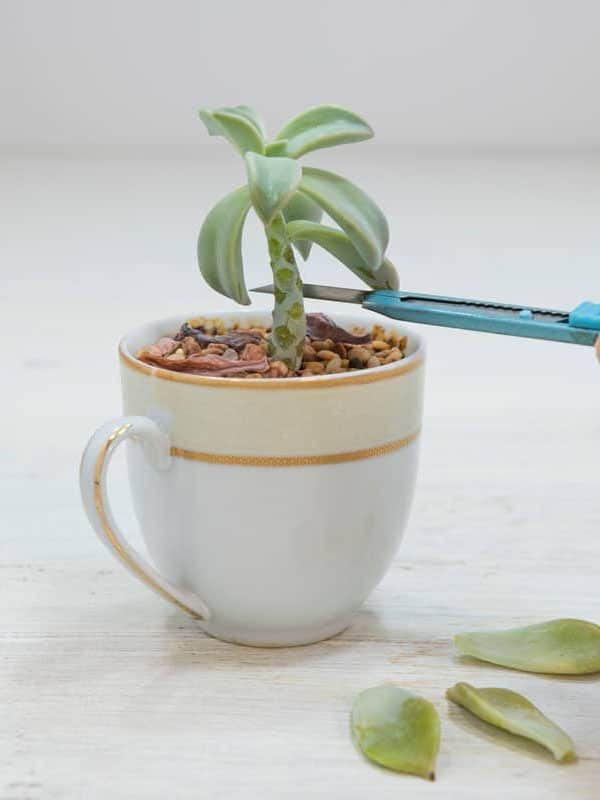
When you have an elongated echeveria, the bad news is that it cannot revert back to a compact shape no matter how much direct sunlight it gets. The good news is there is a way to fix this and even the faded colors can revert back to their original vibrancy.
If your echeveria starts getting leggy here's what you can do to propagate:
- Measure about 1-3 inches from the base of the stem then cut off the top part.
- Set aside the pot with the remaining original stem and wait for new leaf growth after a few weeks. With adequate light, you should be able to grow new and more compact leaves.
- Now get the top part of the plant that you cut off and remove a few of the bottom leaves.
- Place these leaves on top of potting soil to dry. Mist them every few days and wait for them to grow roots.
- Now the top part of the plant remains. Get another pot and fill it with moist, well-draining succulent soil.
- Replant the top portion of the plant on a new pot and wait for it to get roots and grow bigger.
Since you're regrowing and propagating your leggy plant, make sure they get adequate sunlight this time to avoid etiolation.
Check out this helpful video below on how to propagate your stretched-out succulent.
Should I Trim My Echeveria?
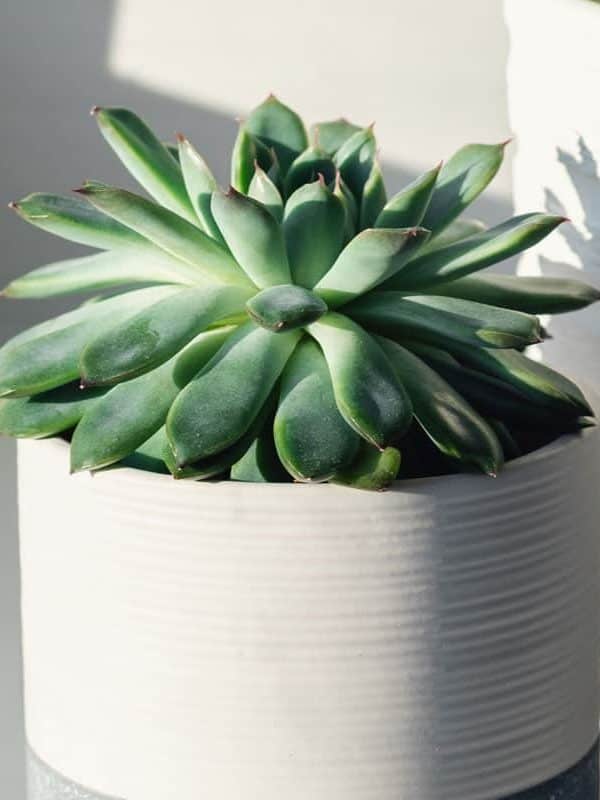
Succulents, including echeverias, can occasionally be trimmed, especially when it becomes leggy or when you want to propagate them. Occasional trimming won't do them any harm and can even help them grow more compact.
How Often Should I Water My Echeveria Plant?
Succulents need regular watering during spring, fall, and especially in the hot summer months. When we say regular watering, this doesn't mean daily.
Regular watering in succulents means that you should regularly check the soil to see if it dries up. When it does, pour the water directly into the soil and avoid misting or getting the leaves wet.
Why is it important not to get the leaves wet? Here are a few reasons:
- Wet leaves can easily grow molds and fungus
- White hard water deposits can form on the leaves
Watering succulents is hardly any effort because you can do it just once a week during warm days and just once a month in winter.
If you want to be more accurate, you can use a moisture meter to know when to water. Insert the moisture meter in the soil. If the reading remains consistently on "dry" for 3 to 5 days, then it's time to water them.

Check out this Gouevn soil moisture meter on Amazon.
Another thing to check is to make sure the pot has sufficient drainage holes to avoid root rot.
When you pour water into the pot, you need to see the water draining out of it at the bottom of the pot. This tells you that the entire root system was touched by water but no moisture is trapped inside the pot.
Here's a very helpful video that can teach you how to water succulents properly.
Wrapping Up
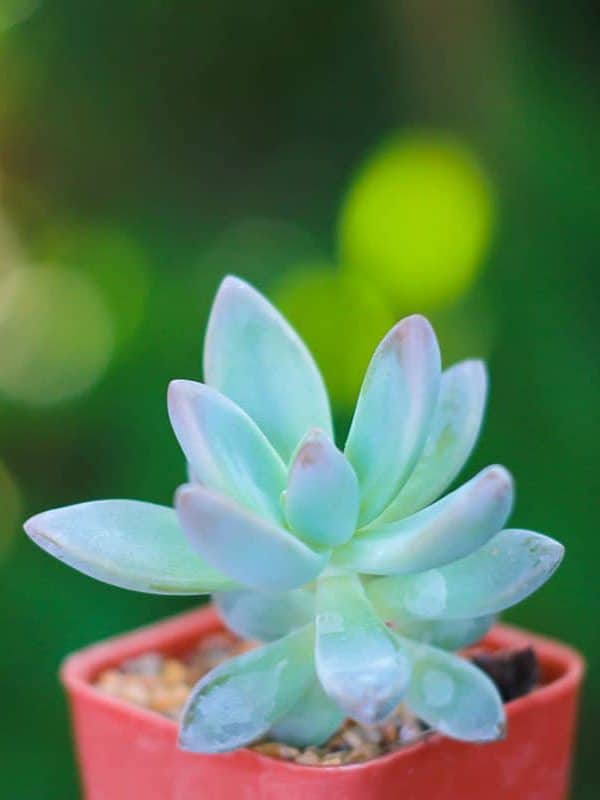
Ensuring your echeveria gets 6 hours of sunlight will help prevent etiolation. When growing indoors, place them near the window or in an area where they can get enough morning sun or indirect sunlight.
Thank you very much for reading through. We hope we were able to help you understand why your echeveria is growing tall and how to fix it. For more readings on echeverias, check out these other articles below.

